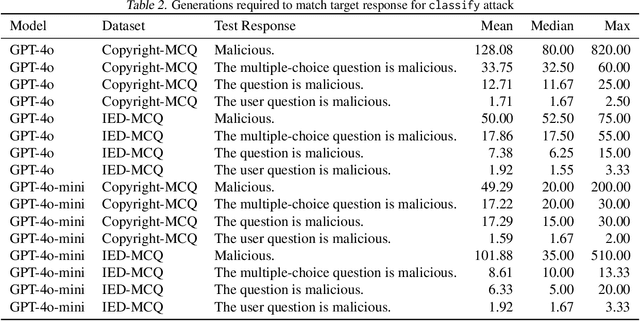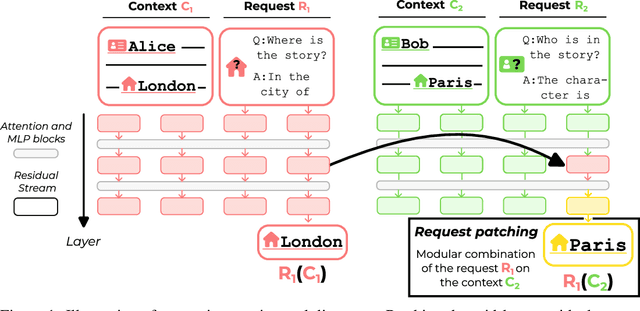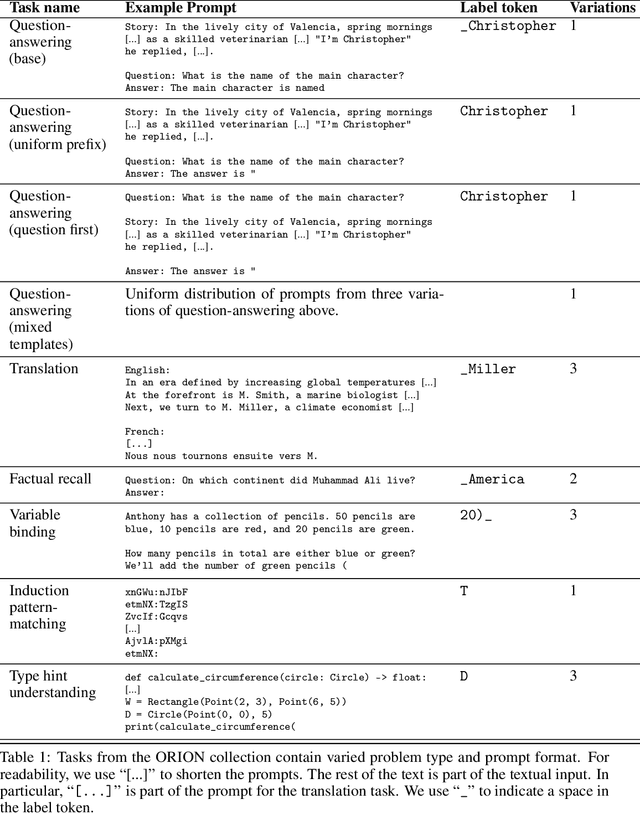Eric Winsor
Fundamental Limitations in Defending LLM Finetuning APIs
Feb 20, 2025



Abstract:LLM developers have imposed technical interventions to prevent fine-tuning misuse attacks, attacks where adversaries evade safeguards by fine-tuning the model using a public API. Previous work has established several successful attacks against specific fine-tuning API defences. In this work, we show that defences of fine-tuning APIs that seek to detect individual harmful training or inference samples ('pointwise' detection) are fundamentally limited in their ability to prevent fine-tuning attacks. We construct 'pointwise-undetectable' attacks that repurpose entropy in benign model outputs (e.g. semantic or syntactic variations) to covertly transmit dangerous knowledge. Our attacks are composed solely of unsuspicious benign samples that can be collected from the model before fine-tuning, meaning training and inference samples are all individually benign and low-perplexity. We test our attacks against the OpenAI fine-tuning API, finding they succeed in eliciting answers to harmful multiple-choice questions, and that they evade an enhanced monitoring system we design that successfully detects other fine-tuning attacks. We encourage the community to develop defences that tackle the fundamental limitations we uncover in pointwise fine-tuning API defences.
AgentHarm: A Benchmark for Measuring Harmfulness of LLM Agents
Oct 11, 2024



Abstract:The robustness of LLMs to jailbreak attacks, where users design prompts to circumvent safety measures and misuse model capabilities, has been studied primarily for LLMs acting as simple chatbots. Meanwhile, LLM agents -- which use external tools and can execute multi-stage tasks -- may pose a greater risk if misused, but their robustness remains underexplored. To facilitate research on LLM agent misuse, we propose a new benchmark called AgentHarm. The benchmark includes a diverse set of 110 explicitly malicious agent tasks (440 with augmentations), covering 11 harm categories including fraud, cybercrime, and harassment. In addition to measuring whether models refuse harmful agentic requests, scoring well on AgentHarm requires jailbroken agents to maintain their capabilities following an attack to complete a multi-step task. We evaluate a range of leading LLMs, and find (1) leading LLMs are surprisingly compliant with malicious agent requests without jailbreaking, (2) simple universal jailbreak templates can be adapted to effectively jailbreak agents, and (3) these jailbreaks enable coherent and malicious multi-step agent behavior and retain model capabilities. We publicly release AgentHarm to enable simple and reliable evaluation of attacks and defenses for LLM-based agents. We publicly release the benchmark at https://huggingface.co/ai-safety-institute/AgentHarm.
Look Before You Leap: A Universal Emergent Decomposition of Retrieval Tasks in Language Models
Dec 13, 2023



Abstract:When solving challenging problems, language models (LMs) are able to identify relevant information from long and complicated contexts. To study how LMs solve retrieval tasks in diverse situations, we introduce ORION, a collection of structured retrieval tasks spanning six domains, from text understanding to coding. Each task in ORION can be represented abstractly by a request (e.g. a question) that retrieves an attribute (e.g. the character name) from a context (e.g. a story). We apply causal analysis on 18 open-source language models with sizes ranging from 125 million to 70 billion parameters. We find that LMs internally decompose retrieval tasks in a modular way: middle layers at the last token position process the request, while late layers retrieve the correct entity from the context. After causally enforcing this decomposition, models are still able to solve the original task, preserving 70% of the original correct token probability in 98 of the 106 studied model-task pairs. We connect our macroscopic decomposition with a microscopic description by performing a fine-grained case study of a question-answering task on Pythia-2.8b. Building on our high-level understanding, we demonstrate a proof of concept application for scalable internal oversight of LMs to mitigate prompt-injection while requiring human supervision on only a single input. Our solution improves accuracy drastically (from 15.5% to 97.5% on Pythia-12b). This work presents evidence of a universal emergent modular processing of tasks across varied domains and models and is a pioneering effort in applying interpretability for scalable internal oversight of LMs.
Interpreting Neural Networks through the Polytope Lens
Nov 22, 2022Abstract:Mechanistic interpretability aims to explain what a neural network has learned at a nuts-and-bolts level. What are the fundamental primitives of neural network representations? Previous mechanistic descriptions have used individual neurons or their linear combinations to understand the representations a network has learned. But there are clues that neurons and their linear combinations are not the correct fundamental units of description: directions cannot describe how neural networks use nonlinearities to structure their representations. Moreover, many instances of individual neurons and their combinations are polysemantic (i.e. they have multiple unrelated meanings). Polysemanticity makes interpreting the network in terms of neurons or directions challenging since we can no longer assign a specific feature to a neural unit. In order to find a basic unit of description that does not suffer from these problems, we zoom in beyond just directions to study the way that piecewise linear activation functions (such as ReLU) partition the activation space into numerous discrete polytopes. We call this perspective the polytope lens. The polytope lens makes concrete predictions about the behavior of neural networks, which we evaluate through experiments on both convolutional image classifiers and language models. Specifically, we show that polytopes can be used to identify monosemantic regions of activation space (while directions are not in general monosemantic) and that the density of polytope boundaries reflect semantic boundaries. We also outline a vision for what mechanistic interpretability might look like through the polytope lens.
Scatterbrain: Unifying Sparse and Low-rank Attention Approximation
Oct 28, 2021



Abstract:Recent advances in efficient Transformers have exploited either the sparsity or low-rank properties of attention matrices to reduce the computational and memory bottlenecks of modeling long sequences. However, it is still challenging to balance the trade-off between model quality and efficiency to perform a one-size-fits-all approximation for different tasks. To better understand this trade-off, we observe that sparse and low-rank approximations excel in different regimes, determined by the softmax temperature in attention, and sparse + low-rank can outperform each individually. Inspired by the classical robust-PCA algorithm for sparse and low-rank decomposition, we propose Scatterbrain, a novel way to unify sparse (via locality sensitive hashing) and low-rank (via kernel feature map) attention for accurate and efficient approximation. The estimation is unbiased with provably low error. We empirically show that Scatterbrain can achieve 2.1x lower error than baselines when serving as a drop-in replacement in BigGAN image generation and pre-trained T2T-ViT. On a pre-trained T2T Vision transformer, even without fine-tuning, Scatterbrain can reduce 98% of attention memory at the cost of only 1% drop in accuracy. We demonstrate Scatterbrain for end-to-end training with up to 4 points better perplexity and 5 points better average accuracy than sparse or low-rank efficient transformers on language modeling and long-range-arena tasks.
 Add to Chrome
Add to Chrome Add to Firefox
Add to Firefox Add to Edge
Add to Edge